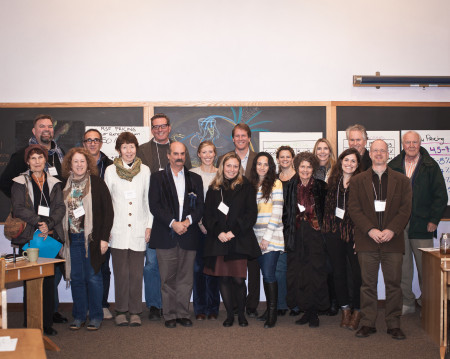Thin Margins, Deep Trust
Jan 7 2014
A brief report on the December 2013 Pricing Meeting in Santa Rosa, CA
by John Bloom
Imagine having a conversation about borrowing money from a good friend or family member. Perhaps you’d like help with a down payment on a house, but your friend or family member is concerned with having money available for retirement in a few years. Furthermore, imagine being asked to be transparent about all of your financial needs, both personal and business. Although all parties involved might want the best for the other, this dynamic could easily put you in opposition, or at least bring a bit of tension to the group.
Thus was the stage set for RSF’s quarterly community pricing meeting held in December at Summerfield Waldorf School & Farm in Santa Rosa, California. The purpose of the meetings is to develop a sense of how lending and investing work at RSF; to explore the mutual interests of investor, borrower, and RSF; and to gather a recommendation for RSF’s Pricing Committee—the group that sets the interest rate for the next quarter. In the RSF Social Investment Fund, the transactions are designed to reflect the needs of all three parties. But we are all still learning our parts together, feeling our way toward what is right and maintains trust, while each learns to let go of culturally ingrained self-interest.
The pricing meeting dynamic is set up as such: investors count on the return, borrowers on low debt service costs, and RSF on the spread between the two.
This pricing meeting was the nineteenth since we began them in 2009 after deciding to decouple from LIBOR as an index for RSF’s interest rates (LIBOR, the London Interbank Offered Rate, is the basis for most short term bank loan interest rates around the world). What made this important but challenging decision possible was our staff study of Rudolf Steiner’s economics lectures in which he speaks about setting price by bringing together all parties involved—producer, consumer, and distributor. This struck a deep chord for us as it is an essential part of our mission to build community through finance.
At the meeting we ask each participant to talk about what motivates them to be investors, what the loan has made possible for borrowers, and then from RSF, what resources are needed to work in our unique way as an intermediary. Further, we ask each person to respond to how a change in interest rate would affect them. During this round of the conversation, the group gains insight into each other’s financial needs, priorities, and plans. For example, at December’s meeting two borrowers indicated that they had set their budgets for 2014 and that any upward change in interest rate would require reducing important program expenditures and potentially compromising business activities. Another borrower suggested that if rates went up they would have to consider looking for another lender. The interest change for investors had significance for each individual, especially those retirees who count on the interest income. However, because there are so many more investors than there are borrowers, and the loans are aggregated from multiple investors, the individual impact seemed more manageable. As the lender, RSF brought to the table the fact that we have not changed the 4% margin we earn since 1991. Given our growth since then, the request was brought to consider increasing that percentage. With this diversity of perspectives came a certain healthy tension in the conversation. After all, that is what we all signed up for as meeting participants.
It was clear from the meeting that everyone is operating on thin margins. This is in part due to historically low interest rates and a weak economy in general. And, as a way to resolve the tension, there was a general desire to maintain the status quo for the first quarter of 2014.
A week following the pricing meeting, the RSF Pricing Committee met to set the interest rate for the quarter. After reflecting on what was shared at the pricing meeting, it was clear that a raise in rate for the borrowers would cause some financial hardship, and might potentially discourage other new borrowers from applying for loans, as banks have a significantly lower cost of capital and more flexibility to negotiate rates. While none of the investors was enthusiastic about a lower interest rate, it seemed they were overall affected less by a change. Even a slightly reduced rate is still competitive with rates on bank savings accounts or CDs. The Pricing Committee needed to adjust somewhat for RSF’s needs, at least for the near term. The result was a reduction of return to the investors by 25 basis points from the current rate of .50% to .25%, with RSF Prime (the rate for borrowers) remaining the same at 4.5%.
This last gathering marked an important change in the nature of the pricing meetings. The associative picture that Rudolf Steiner gave was fully present as all parties outlined their needs, engaged in understanding, and spoke from their hearts. Though the resulting recommendation for status quo was not followed, the Pricing Committee believes it took into account the needs that were voiced at the meeting. RSF’s purpose to transform the way the world works with money is exemplified in the engaged process we call pricing meetings. We cannot imagine a more direct, transparent, and personal way to work with interest rates. Though the system may not be perfect for everyone, the participants in the meetings can assure you that it is real.
John Bloom is Senior Director of Organizational Culture at RSF Social Finance
